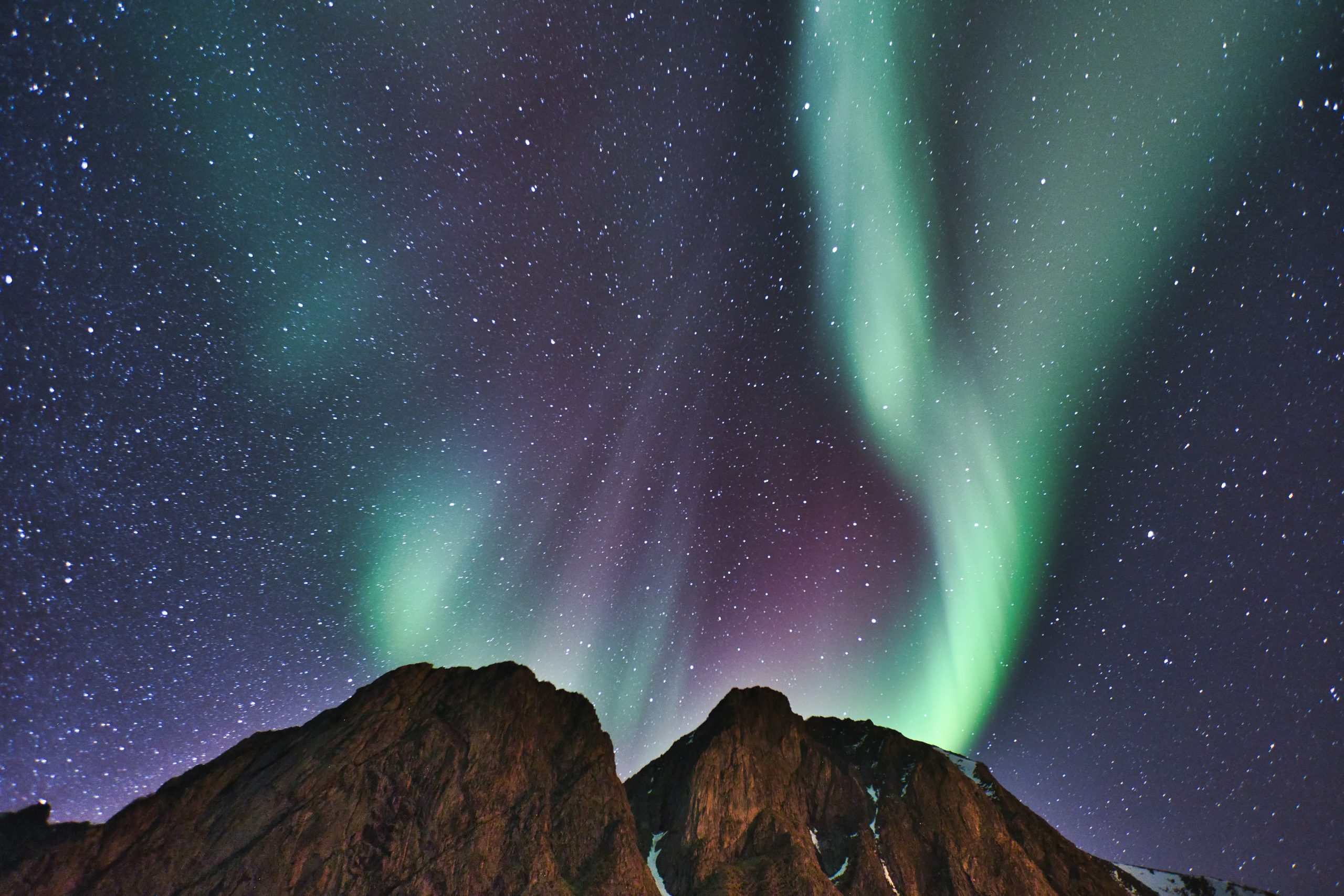How Animals Adapt to Extreme Environments (Deserts, Arctic, etc.)

Looking for more amazing products? Check out our online store and explore our collection here! Happy shopping!
Before diving in, please note: This post is for informational purposes only. If you’d like to know more about how we approach topics, feel free to check out our friendly Disclaimer Page.
Hey there, amazing readers! 
We’re committed to delivering quality posts, and your support (even just sticking around despite the ads) means everything to us. So, bear with us, and thanks for helping us keep the good vibes rolling. Now, on to the fun stuff!
TRANSLATE BUTTON AT THE END OF THE ARTICLE
A Quick Overview
Animals are remarkable in their ability to adapt to extreme environments.
From scorching deserts to freezing Arctic landscapes, life finds a way.
These adaptations aren’t just fascinating; they reveal the resilience of nature and the ingenious strategies that animals employ to survive.
This article takes a deep dive into how various creatures thrive in some of the planet’s most challenging conditions, showcasing the wonders of adaptation.
Understanding Extreme Environments: A Quick Overview
Extreme environments come with unique challenges.
Deserts, with their intense heat and minimal water, can be unforgiving.
On the flip side, the Arctic presents its own hurdles, like plummeting temperatures and scarce food sources.
Understanding these environments helps us appreciate the extraordinary adaptations that have evolved over time.
Take deserts, for instance.
They can reach scorching temperatures during the day while dropping to near-freezing levels at night.
The lack of consistent water makes survival difficult.
Creatures here have developed various strategies to cope with these extremes.
The Arctic, however, is a different ballgame.
It’s a frozen world where temperatures can dip below minus 30 degrees Fahrenheit.
Food can be hard to find, and the landscape can seem barren.
Yet, this environment is home to a range of specialized species that have found ways to thrive despite the cold.
Both habitats challenge the inhabitants in different ways, and the solutions these animals have come up with are nothing short of extraordinary.
Whether it’s storing water, insulating bodies, or changing activity patterns, the adaptations are impressive.
Let’s explore these survival tactics more closely.
Life in the Desert: A Study of Resilience and Adaptation
Deserts are often viewed as lifeless, but they teem with life.
Animals in these regions are masters of resilience.
For example, the fennec fox, with its large ears, uses its keen hearing to locate prey buried beneath the sand.
Those ears are not just for show; they help dissipate heat too.
Then there’s the kangaroo rat, a small rodent that has adapted to survive without ever drinking water.
It derives all the moisture it needs from the seeds it eats.
Isn’t that mind-boggling?
These creatures have evolved to be incredibly efficient.
Moreover, many desert animals are nocturnal, coming to life when the sun sets.
This allows them to avoid the intense daytime heat.
They have a unique ability to adjust their schedules to take advantage of the cooler temperatures.
Discover "Dog Care: Learning How to Care for Your Furry Friend
"
Desert survival often means being opportunistic.
For instance, the horned lizard can change its color based on the temperature and surroundings.
If it’s too hot, it can darken its skin to absorb more heat; if the temperature drops, it can lighten up to reflect sunlight.
Understanding the desert is about recognizing the tight-knit relationships animals have with their environment.
Each creature plays a role in the ecosystem, and their adaptations help keep the balance.
Ingenious Water Conservation Strategies in Desert Dwellers
Water is a precious resource in the desert.
Animals have developed some clever tricks to make the most of it.
Many desert species, like the camel, can drink up to 30 gallons of water in one go.
But here’s the kicker: they can go for weeks without water afterward!
Other animals, like the desert tortoise, have evolved to store water in their bodies.
This adaptation allows them to survive during extended dry spells.
They can slow their metabolism down to conserve water, essentially entering a state of dormancy.
Even insects have incredibly efficient water-saving methods.
The Namib Desert beetle has a fascinating way of collecting water from fog.
Its body has special grooves that trap moisture, which then drips down into its mouth.
Talk about ingenuity!
Some animals have adapted their behavior to reduce water loss.
For example, the common lizard avoids the sun during the hottest part of the day, which helps prevent dehydration.
Each strategy shows how life can flourish in conditions that seem impossible for survival.
These adaptations are not just survival tactics; they’re a testament to the ingenuity of nature.
How Cacti and Succulents Thrive in Harsh Sunlight
Now, let’s talk about plants!
Cacti and succulents are the poster children of desert life.
Their adaptations are nothing short of remarkable.
These plants store water in their tissues, allowing them to survive long dry spells.
This storage capacity means they can stay hydrated even when rain is scarce.
Cacti also have a special structure called stomata, which are tiny openings that allow for gas exchange.
During the hottest part of the day, these stomata close to prevent water loss.
Instead of photosynthesizing during the day like most plants, they do it at night when temperatures are cooler.
Interestingly, cacti have developed a thick, waxy skin that helps retain moisture.
This protective layer reduces water loss and reflects sunlight, keeping the plant cooler.
Some cacti can even produce spines, which serve a dual purpose: they protect the plant from herbivores and provide some shade.
This adaptation not only helps in survival but also contributes to the overall ecosystem by providing habitats for other animals.
The beauty of cacti isn’t just in their survival skills; it’s in their ability to thrive in what seems like a barren landscape.
Their vibrant flowers often bloom after a rainstorm, showcasing resilience and beauty intertwined.
Arctic Adventures: Animals Conquering the Cold
In stark contrast to deserts, the Arctic is a frozen expanse where survival hinges on different skills.
Cold temperatures and limited daylight require unique adaptations.
Take the polar bear, for instance.
These magnificent creatures have thick fur and a layer of blubber to insulate them from frigid temperatures.
They can even swim for miles in icy waters!
Then there’s the walrus, which uses its whiskers to locate clams under the ice.
Their blubber not only keeps them warm but also stores energy for when food is scarce.
Arctic animals often have lighter-colored fur or feathers that provide camouflage against the snow.
The snowy owl, for example, blends seamlessly into its surroundings, making it a formidable hunter.
Food storage is another critical adaptation.
Many Arctic species, like reindeer, can store fat during the summer months, which they can rely on during harsh winters.
This strategy helps them endure the long, dark days when food is hard to find.
Moreover, some animals, like the Arctic fox, can change their fur color with the seasons—white in winter for camouflage, and brown in summer to match the tundra.
This adaptability ensures survival in a landscape that can shift dramatically.
Insulation and Camouflage: The Arctic Fox’s Secrets
The Arctic fox is a true marvel of adaptation.
With its thick fur and small ears, it retains heat efficiently.
Those furry paws act as natural snowshoes, allowing it to walk over the snow without sinking.
But it’s the Arctic fox’s camouflage that truly sets it apart.
In summer, its fur turns a brownish-gray, allowing it to blend into the tundra.
In winter, it becomes pure white, making it nearly invisible against the snow.
This change is essential for both hunting and evading predators.
Besides camouflage, the fox’s diet is varied.
It eats small mammals, birds, and even scavenges on carrion.
This adaptability in diet is crucial during resource-scarce months.
The Arctic fox also exhibits a fascinating behavior called caching.
It buries surplus food to consume later.
This behavior is a life-saver during the long winters when food is scarce.
Whether it’s a change in fur color or a clever hunting strategy, the Arctic fox exemplifies how adaptation can lead to success in extreme conditions.
The Remarkable Migration of the Monarch Butterfly
Migration is another incredible adaptation seen in nature, particularly with species like the monarch butterfly.
Every year, these butterflies journey thousands of miles from North America to central Mexico.
They navigate using a combination of environmental cues, including the sun’s position and Earth’s magnetic field.
This migration is not just a journey; it’s a survival tactic.
During winter, the butterflies cluster together in trees, utilizing the warmth of the sun to stay alive.
They can tolerate lower temperatures than most other butterflies, but they still need to avoid freezing.
What’s fascinating is that the migration takes several generations.
Each generation completes only a part of the journey.
This collective effort ensures the species’ survival despite the challenges of extreme weather.
The monarch’s ability to travel such vast distances showcases the incredible determination and resilience of wildlife.
These butterflies remind us that survival often means working together and adapting to the world around us.
Nocturnal Creatures: Surviving the Scorching Day
Just as some animals have adjusted to harsh winters, others have found ways to beat the heat.
Nocturnal creatures come alive at night, taking advantage of cooler temperatures.
Take the great horned owl, for example.
With its exceptional night vision, it hunts in darkness, avoiding the scorching sun during the day.
Many desert animals, like the jerboa, are also primarily active at night.
This critter has long hind legs adapted for hopping over sand dunes, making it a speedy escape artist.
Its large eyes help it spot predators in the dim light, ensuring its survival.
Nocturnal life isn’t just about dodging the heat; it’s a lifestyle choice that alters feeding and mating habits.
These adaptations help these animals thrive in harsh conditions while contributing to their ecosystems.
We often overlook the bustling life of the night, yet it’s packed with creatures that have evolved to make the most of their environment.
They show us that every corner of the Earth has life, each with its unique tricks for survival.
Unique Breeding Strategies in Extreme Weather Conditions
Survival in extreme environments also requires innovative breeding strategies.
Many animals, like the snowshoe hare, time their breeding to coincide with favorable conditions.
By having their young when food is plentiful, they increase the chances of survival.
In the desert, animals like the quail can breed multiple times a year, taking advantage of the rainfall.
Their chicks are often born in synchrony with the flowering of plants, ensuring ample food supply.
In the Arctic, animals like the reindeer give birth during the brief summer months.
This timing allows the calves to grow strong during the lush season, preparing them for the harsh winter ahead.
Breeding strategies highlight the adaptability of species, showing how life can find a way to thrive even in the most challenging conditions.
The Role of Hibernation in Extreme Environments
Hibernation is another fascinating strategy that many animals use to survive extreme environments.
During hibernation, metabolic rates drop significantly, allowing creatures to conserve energy.
Ground squirrels and bears are prime examples of this behavior.
When food becomes scarce, these animals enter a state of dormancy.
Their bodies slow down, and they rely on stored fat to survive.
This natural pause in activity allows them to endure periods of extreme cold or drought.
Interestingly, some animals can awaken from hibernation during warmer spells.
This ability means they can take advantage of unexpected food sources, showcasing their adaptability.
Hibernation is not just a survival tactic; it’s a smart strategy that highlights the connection between behavior and environmental conditions.
Lessons from Nature: Adaptations for Climate Change
As our planet undergoes rapid changes due to climate change, the adaptations of animals provide valuable lessons.
Species that can quickly adjust to new environmental conditions will be better positioned to survive.
Many animals are already showing signs of adaptation.
For instance, some birds are shifting their migration patterns to align with changing climate conditions.
Similarly, certain species are altering their breeding times to match food availability.
Understanding these changes can inform conservation efforts, allowing us to protect vulnerable species better.
The adaptability of wildlife serves as a reminder that life is dynamic.
We must adapt alongside it to ensure a balanced ecosystem.
Celebrating Nature’s Wonders: The Beauty of Adaptation
The marvel of adaptation is all around us.
Each species has a story, a unique way of thriving in its environment.
Nature’s ingenuity is not just about survival; it’s a celebration of life’s resilience.
Exploring how animals adapt to extreme environments reveals the intricate web of life.
It sparks curiosity and encourages us to appreciate the wonders of nature.
As we look towards the future, these adaptations remind us of the importance of balance in our ecosystems.
By protecting habitats, we support the incredible adaptations that allow life to flourish under even the most challenging circumstances.
Conclusion
The ability of animals to adapt to extreme environments is a testament to the tenacity of life on Earth.
From the arid deserts to the icy Arctic, each species showcases its resilience through inventive survival strategies.
By learning more about these adaptations, we not only gain insight into the world around us but also develop a deeper appreciation for the intricate tapestry of life.
So, next time you spot a polar bear trudging through the snow or a desert tortoise basking in the sun, remember: every creature has its tale of adaptation, survival, and the undying spirit of nature.

The Enlightenment Journey is a remarkable collection of writings authored by a distinguished group of experts in the fields of spirituality, new age, and esoteric knowledge.
This anthology features a diverse assembly of well-experienced authors who bring their profound insights and credible perspectives to the forefront.
Each contributor possesses a wealth of knowledge and wisdom, making them authorities in their respective domains.
Together, they offer readers a transformative journey into the realms of spiritual growth, self-discovery, and esoteric enlightenment.
The Enlightenment Journey is a testament to the collective expertise of these luminaries, providing readers with a rich tapestry of ideas and information to illuminate their spiritual path.
Our Diverse Expertise
While our primary focus is on spirituality and esotericism, we are equally passionate about exploring a wide range of other topics and niches 

To ensure we provide the most accurate and valuable insights, we collaborate with trusted experts in their respective domains 
Our blog originally focused on spirituality and metaphysics, but we’ve since expanded to cover a wide range of niches. Don’t worry—we continue to publish a lot of articles on spirituality! Frequently visit our blog to explore our diverse content and stay tuned for more insightful reads.
Hey there, amazing reader! 
Check out our store here and take a peek at some of our featured products below! Thanks for being awesome!










